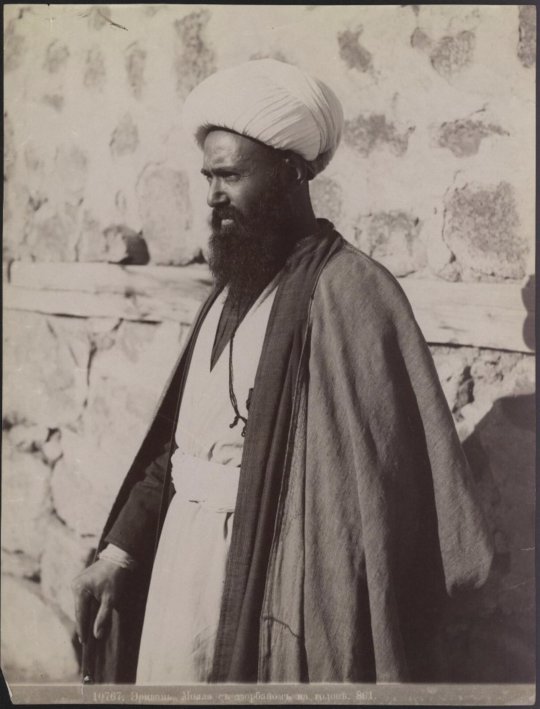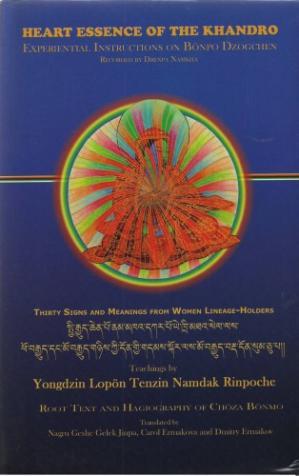#Dmitri Ermakov
Explore tagged Tumblr posts
Photo
aka Dmitri Ermakov

185 notes
·
View notes
Text

Mullah with a turban in Yerevan, Armenia, late 19th century. Photographed by Dmitri Ermakov.
81 notes
·
View notes
Text


This is a colourization I did of a "Transcaucasian Tatar" aka Azerbaijani woman. I researched ethnic groups of the region and I concluded that this is an Azerbaijani woman because the term 'Transcaucasian Tatar' was the former name used by the Soviets for Azerbaijanis. The original caption was "Татарка Ахундова" which is how I concluded she was a Transcaucasian Tatar. The original photographer is Dmitry Ivanovich Ermakov.
This is the original source of the b+w image: https://dspace.nplg.gov.ge/handle/1234/199704
#azerbaijan#azerbaijani#georgian#georgia#caucasus#caucasian#sakartvelo#tatar#muslim#history#colorized#colorization
28 notes
·
View notes
Text

Dmitri Ermakov - Georgian Military Road
3 notes
·
View notes
Text
Noites brancas: um sonho de verão
O livro escrito por Dostoiévski se passa durante o verão, na cidade de São Petersburgo, nesse período as tardes são longas pois o sol não se põe por completo, banhando a paisagem com uma linda luz do entardecer. E é nessa ambientação que se passa a história de um homem sonhador. Foto: Dmitry Ermakov/NurPhoto via G1 O homem sonhador, como vou chamá-lo, passeia pela cidade São Petersburgo…

View On WordPress
6 notes
·
View notes
Video
vimeo
Eldzhey // Harakiri from Pavel Beliavskii on Vimeo.
Director - Max Shishkin @shishkinmax Music by Tars @tarsmakessence Rec & mix by Creamy @creaminal Art-director - Elza Serova @elzaserova Cinematographer - Pavel Belyavsky @belyavskyp Producer - Anastasia Klabukova @wow.wonder Wardrobe Stylist - Anna Artamonova @aartamon Production Designer - Philipp Sheyn @philippsheyn 1st AD - Konstantin Trubin @trubin_good 2nd AD - Anastasia Brovko @nastya_bro Casting Director - Gulya Jafarova @gu.jfrv Make-up Artist - Elza Tsedenova @elza.tsedenova Production Manager - Alexander Lyubenko @lubenkoadmincrew @liubenko.a Wardrobe Assistant - Anastasia Nevodina, Lilia Kabirova Assistant Designer - Pavel Ilchenko @il4 Сasting Assistant - Valentin Kudryavtsev @valentinkudryavtcev Make-up Artist Assistant - Evgeniya Karaseva @lamiu.m Administrators - Alexander Ponomar, Vlad Ponomar Gaffer - Kirill Shkhundin @kirillshkundin Focus-puller - Ivan Sushko Lighting Crew - Ilya Turov, Nikolay Shugurov, Evgeny Maslenkov, Ivan Belchenko, Sergey Ermakov, Yury Tikhomirov Camera Assistant - Vyacheslav Mukhin, Egor Chesnikov @egogiii Dolly - Alexander Kashin @kashinsdollygang Stagehands on set - Munir Ibadullaev, Sergey Shuster, Anatoly Pozdnyakov, Anatoly Pozdnyakov, Gurgen Ter-Hakopyan SFX - Maxim Sorokin @sorokin_m_ , Evgeny Sorokin, Olyanishin Pavel, Gogachev Dmitry @sfxstudio.ru Rental Sky Rental - Aleksandr Kykhalov @kihalov VFX Silent Studio - @silent_std Oleg Charukhin, Leonid Pak, Dabyrbek Daniyas, Louise Dolgieva, Artem Shapran, Dogalbekov Meirambek, Darmen Daulet Color Grading - Alexander Zolotorev @alexanderzolotorev Sound designer - Demitar Kesov @dima_kesov , Anton Nikiforov @tonymusfactor Actors - Babek M. Si. @babek.m.si, Tynchtyk Matubraimov Zhakshylykovich @bonbonofficiall, Vladimir Kopush, Rolan Arapov, Stanislav Levashov @levashov_st, Mahamotkamil uulu Makhomotshakir @grow_with_, Marat Salmurzaev @salmurnur, Roman Ovshinov
0 notes
Text

Three Kurdish men in Yerevan, Armenia, late 19th century. Photographed by Dmitry Ermakov.
0 notes
Photo

/ Dmitry Ermakov
0 notes
Photo

Dmitri Ivanovich Ermakov - The fire on the oil field in Baku, Azerbaijan 1880
120 notes
·
View notes
Photo

nobre da imerícia, georgia, dmitry ermakov
27 notes
·
View notes
Text

Azerbaijani Muslim carpet sellers in Tbilisi, Georgia, ca. 1900. By Dmitry Ermakov.
55 notes
·
View notes
Text
Sonam Gyatso demanded that the Mongol emperor mercilessly annihilate shamanism in Mongolia. The spiritually independent shamans were an inconvenience to an organized state religion, so they were viciously persecuted. Thousands of shamans and their supporters were deported, dishonored, marginalized (by incorporating them into a lineage of Lamaist tulkus, or masters), imprisoned, and/or put to death. This occurred in both Mongolia and Tibet. The Mongolian populace converted to Lamaism in mass numbers to avoid the slaughter. The Asian Art Museum of San Francisco in 1995 exhibited a Buddhist painting depicting a Mongol shaman being burned to death while lamas calmly look on.
In a most curious twist of history, the very system of recognizing reborn lamas, which almost destroyed shamanism in Mongolia and Tibet, may have originated among shamans in Mongolia. The British writer Peter Kingsley convincingly proposes that recognition of reincarnated shamans significantly predates Buddhist influence, using the very same recognition tests such as a candidate correctly selecting the shamanic implements they had used in their previous incarnation.
Dmitry Ermakov also concludes that gifted, powerful shamans of the zaarin rank reincarnated, and were identified by means of the clan tamga (seal) or a swastika (which, as most students of religion know, is a holy symbol in Asia). This symbol was branded onto the corpse of a deceased shaman. If a child born later showed birthmarks in a similar form, a shaman might test the child to see whether it could identify her or his previous shamanic implements. This was a major event for a clan, and one of the ways lineages were maintained. Though reincarnation was an integral part of Hindu and Buddhist belief systems, the Tibetan reincarnated-lama system did not originate in India...
The struggle between shamanism and Lamaism was by no means an easy one. Warring factions supporting different shamanic traditions railed against a variety of Lamaist schools, and vice-versa, all competing for political and social power. In the countryside, far from the centers of civilization, most local shamans continued their practices of healing and divination for their communities uninterrupted. It was probably here—far from the Khans, the nobles, the lamas, and the priests—that Mongolian shamanic practices were most authentically preserved.
Buddhism eventually gained the upper hand, and subsumed shamanism to a large extent, swallowing entire shamanic lineages whole by claiming that a shaman of renown was actually the reincarnation of a great lama of the past. Lamaism also appropriated great quantities of shamanic rituals into their religion, turning more and more of the public toward their colorful rituals and away from local shamans. Finally, political and Lamaist leaders declared shamanism a degenerate substratum of Buddhism.
-- Kevin Turner, Sky Shamans of Mongolia
3 notes
·
View notes
Text
Heart Essence of the Khandro: Instructions on Bonpo Dzogchen: Thirty Signs and Meanings from Women Lineage-Holders
Heart Essence of the Khandro: Instructions on Bonpo Dzogchen: Thirty Signs and Meanings from Women Lineage-Holders
Heart Essence of the Khandro: Instructions on Bonpo Dzogchen: Thirty Signs and Meanings from Women Lineage-Holders Yongdzin Lopon Tenzin Namdak Rinpoche, Nagru Geshe Gelek Jinpa, Carol Ermakova, Dmitry Ermakov This Book contains thirty short instructions sum up what each Khandro learnt and then, finally, what she experienced and taught her disciple. The ispiring biography of one of these great…

View On WordPress
0 notes
Photo

Finno-Ugric Peoples | Paganism & Russification — Edge of Humanity Magazine — msamba Visual Artist Dmitry Ermakov is the Edge of Humanity Magazine contributor of this photo essay. From the project ‘River Under Earth’.
0 notes

